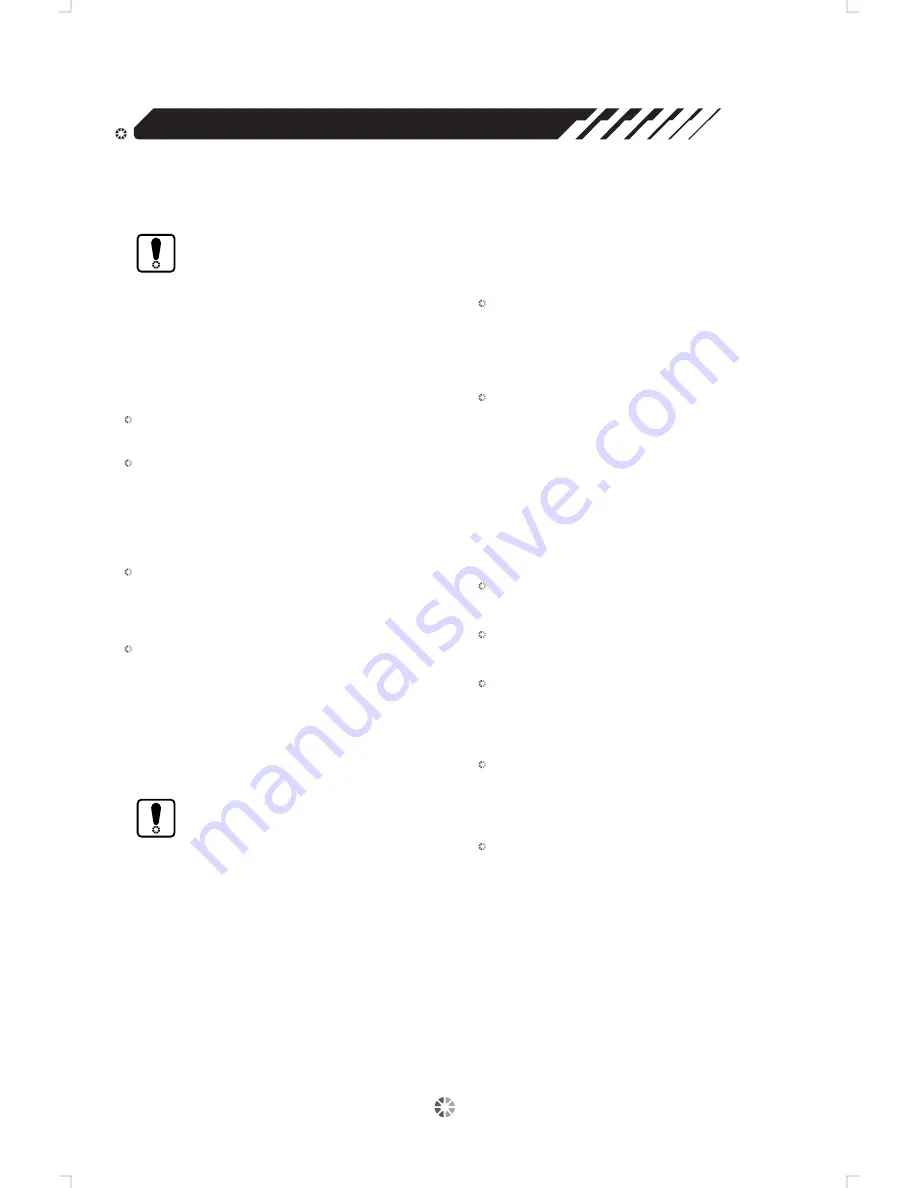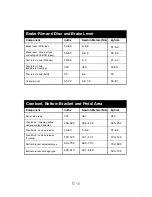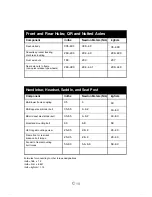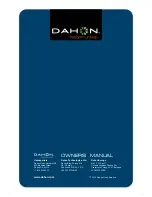
08
Tech
Wheels
Installing a Quick Release Front Wheel
• Move the quick-release lever away from the
wheel to the OPEN position.
• With the steering fork facing forward, insert
the wheel between the fork blades, so the axle
seat is firmly on top of the slots that are at the
tips of the fork blades - the fork dropouts. The
quick-release lever should be on the left side
of the bicycle.
• With your right hand holding the quick-release
lever in the OPEN position, tighten the tension-
adjusting nut with your left hand until it is tight
against the fork dropout.
• Simultaneously, push the wheel firmly to the
top of the slots in the fork dropouts and center
the wheel rim in the fork. Move the quick-release
lever upwards and swing it into the CLOSED
position. The lever should be parallel to the fork
blade and curved back toward the wheel. With
just the right amount of force, the lever should
make a clear, embossed mark on the surface
of the fork.
CAUTION:
If your bike is equipped with disk brakes,
be careful not to damage the disk, caliper
or brake pads when re-inserting the disk
into the caliper. Unless the disk is correctly
inserted in
the calliper, do not activate a disk
brake’s control lever. See also Figure 4.B.
WARNING:
A secure clamping process of the front and
rear wheels should take considerable force.
When securing the tension of the rear wheels,
you should be able to fully close the quick
release by wrapping your fingers around
the fork blade for leverage. The lever should
leave a clear, embossed mark in the surface
of your fork if it is done correctly. Open the
lever, turn the tension-adjusting nut Clockwise
a quarter turn, then try again to achieve the
proper safety measures.
Installing a Quick Release Rear Wheel
• If the lever cannot be pushed to a parallel
position with the fork blade, return the lever
to the OPEN position. Then try to turn the
tension-adjusting nut counter-clockwise by
one-quarter turn.
• To restore correct brake pad-to-rim clearance,
re-engage the brake quick-release mechanism.
Check by spinning the wheel of your bicycle to
see if it is centered in the frame and clears the
brake pads. Lastly, squeeze the brake levers to
make sure they are working properly.
• Check to make sure the rear derailleur is
still in its outermost, high-gear position.
• Pull back the derailleur body with your right
hand.
• Move the quick-release lever to the OPEN
position, the lever should now be on the
side of the wheel opposite the derailleur and
free-wheel sprockets.
• Place the chain on top of the smallest free-
wheel sprocket. Then, insert the wheel up and
then back into the frame dropouts. Pull it all the
way into the dropouts section.
• Tighten the quick-release adjusting nut until
it is firmly against the frame dropout. Swing the
lever toward the front of the bike. To be sure,
the lever should be parallel to the frame’s chain
stay (seat stay) and curved toward the wheel.
When applying the correct amount of clamping
force, you should be able to wrap your fingers
around the frame tube for leverage. A sign you
have done this correctly is when you have a clear,
embossed mark in the surface of your frame.





































